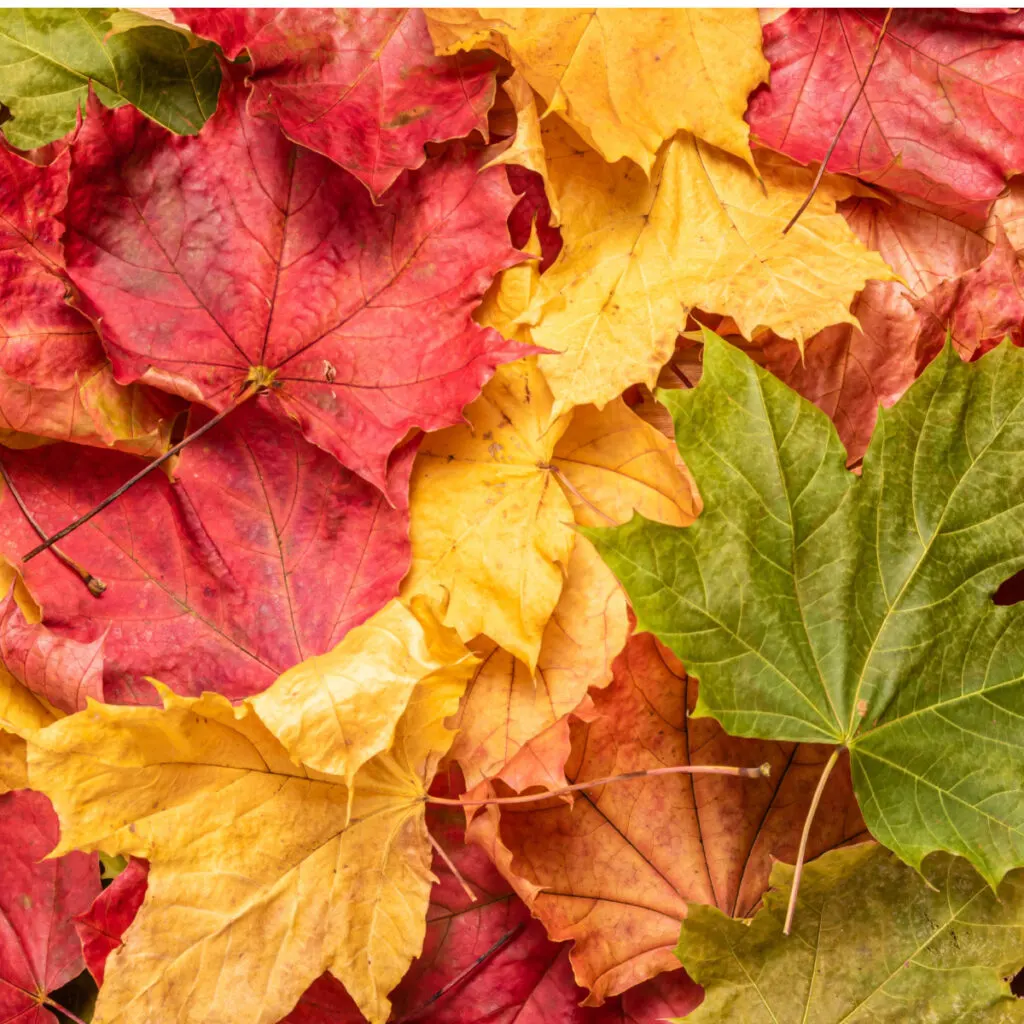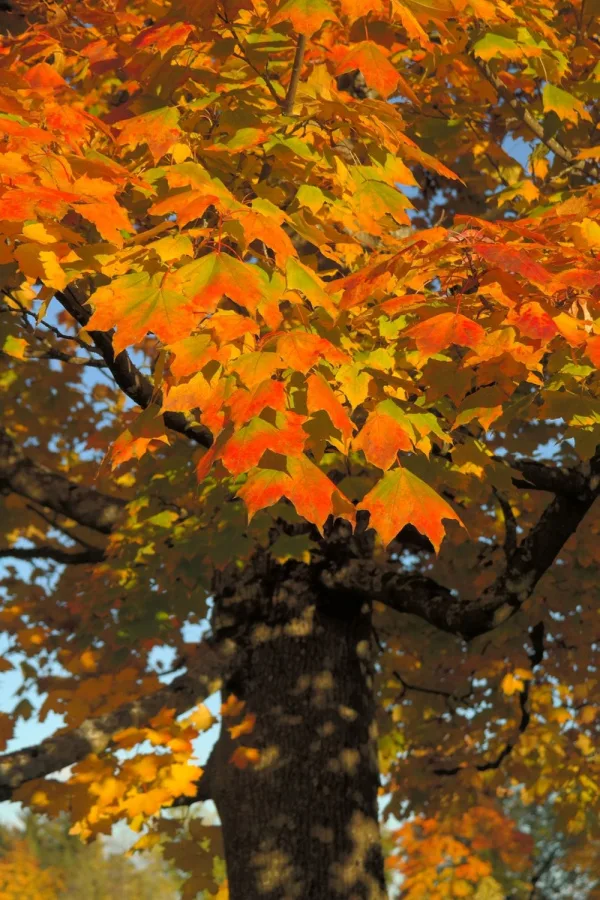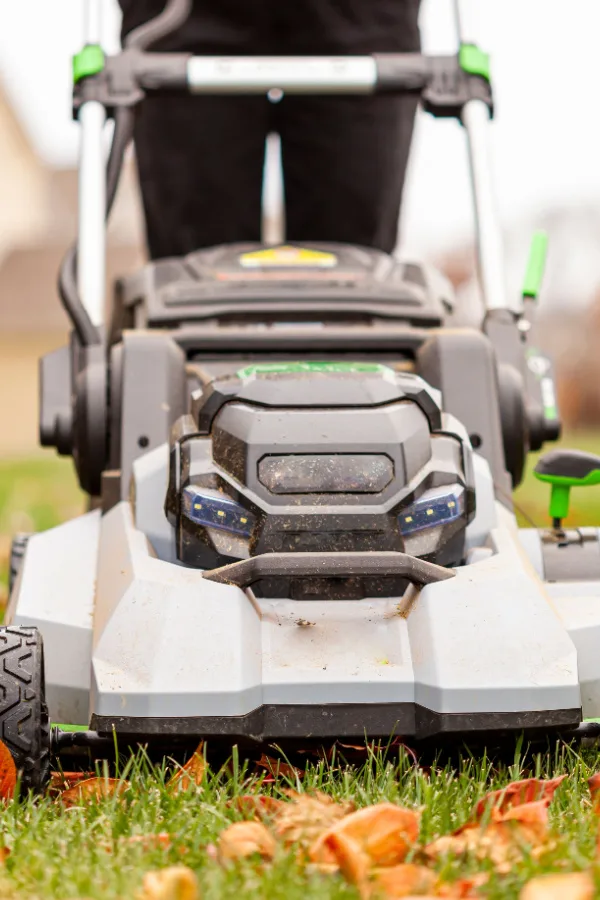Looking for a few tips, tricks and secrets to turn all of those falling leaves into great compost this fall – and do it faster than ever?
Autumn is here and that means the leaves are starting to fly off the trees and pile up everywhere. Although for many fall is the season of endless leaf raking, blowing and bagging, all of that work can pay off. Especially when you turn all of those leaves into incredible compost for next year’s garden and flowerbeds!
Composting your leaves is a great way to clean up the yard and create an abundance of amazing compost. Which, of course, can help power your vegetable plants and flowers to be more productive and healthier than ever.

Let’s face it, when it comes to recharging and building soil naturally, it’s hard to beat the power of compost. Working in large amounts of compost to your flowerbeds and garden keeps soil fertile and productive. As does using it when planting annuals, perennials and shrubs, trees and bushes.
Leaves – The Perfect Compost Ingredient!
For many gardeners, it can often be a struggle finding enough materials to make the large amounts of compost they need. But that is exactly where leaves can save the day. Not only is there an overabundance of leaves in the fall – when composted correctly, they can be turned into loads of finished compost by early spring. Which, of course, is just in time for planting season!
The good news is that creating a fast working compost pile isn’t difficult or complicated. In fact, by following the few simple tried and true tricks below, you can easily have your pile cooking away in no time at all – and turn those leaves into great compost you can use next spring!
How To Compost Leaves Fast
Selecting The Right Leaves
The first rule of making fast compost from leaves is to only include leaves that break down quickly. It’s also important at the same time to make sure the variety of leaves won’t harm your plants.

Although you can compost all types of leaves, there are some varieties that are harder to compost than others. These are best left out of fall compost piles because they can slow the decomposition process down and leave you waiting years for finished compost instead of months.
Leaves from trees that produce waxy leaves such as magnolia and ginkgo trees are among the hardest to compost. Their protective, shiny coatings can take years to break down. It is also best to leave pine needles out of a leaf compost pile. Again, their coating simply takes too long to break down.
You can still use magnolia, ginkgo leaves and pine needles as a great mulch. But these hard to break down materials are simply not helpful for fast composting. Especially if you are looking to have a pile ready to use next spring or summer. See: How To Use Pine Needles In Gardens & Flowerbeds – And Where Not To!
In addition to leaves that break down slowly, there are also a few tree varieties whose leaves can be harmful to plants when turned into compost. Black walnut, eucalyptus, beech and buckeye trees all fall into this category. All contain various toxins and substances that can either kill or harm plants.
The Best Leaves To Use For Making Compost Fast
So what are the best leaves to use? Fruit trees, maple trees, and other soft-leaf producing trees such as ash and birch top the list. Poplar, willow, cherry, black cherry and elm trees are also good. Oak leaves can be use for composting too, but due to their acidity, should never make up more than a third of the pile.
All of the leaves above are not only full of nutrients, they also happen to break down quickly in a compost pile. Especially, as you will see with tip number two below, you shred them first!

Shredding – How To Compost Leaves Fast
If you want to make compost fast with leaves, it all starts with shredding them before building your pile. Chopping up leaves speeds up the decomposition process immensely – and saves on space as well. Whole leaves can take years to break down. And when wet, they create a moldy, smelly and very unsightly compost pile.
The good news is that shredding doesn’t have to be difficult or time consuming. Nor do you have to have fancy equipment. Sure, a leaf shredder or chipper works wonders, but there are other tools that are usually on hand that can do the job just as fast.
In fact, the easiest and fastest way to shred leaves into fine pieces is with a lawn mower. A few passes with a riding or push mower and your leaves will be perfect for composting. If you happen to have a bagging attachment on your push mower, it makes collecting even easier.
Power Up Your Leaf Pile – How To Compost Leaves Fast
Once you have your pile of shredded leaves, it’s time to heat them up to get them decaying. Although large piles of shredded leaves will decompose slowly over time by themselves, by adding additional “hot ingredients” to your pile, you can speed up the process and create your own version of black gold.

A great compost pile is made up of a blend of dry and green materials. The shredded leaves (a dry material), need to be blended with enough green to activate the pile.
Green materials are the main source of nitrogen to the pile. And nitrogen is the crucial element needed to start the process of rapid decomposition. A good rule of thumb for a fast-acting pile is to add one part green for every four parts dry.
Keeping The Pile Balanced
In simple terms, that means if you add in four large bags of shredded leaves, add in the equivalent of a large bag of green material. Good “greens” for your pile include coffee grounds, potato peels, vegetable scraps, and green grass clippings.
Also included in the green family is manure from animals like chickens, rabbits, cow or horse. (Do not use pet manure as they can easily transmit disease)
When making a fall leaf composting pile, try to add as many greens to the pile as you can early on. The faster you get the balance of green to brown right, the faster it will break down. You can also continue adding greens to the pile during the fall season. When you do, simply turn them into the center of the pileto help add even more heat and speed decomposition.
As for the size of your leaf compost pile – keep it at least 3′ high x 3′ wide x 3′ deep. This will be big enough to generate internal heat, but not too large to manage. Open garden spaces are great places to locate a pile during the fall and winter months – and you don’t even need to add sides to contain it!

Maintaining Your Pile – How To Compost Leaves Fast
Once created, a compost pile needs oxygen and water to thrive. And the only way to provide it is by turning and watering the pile as needed on a regular basis.
Turning allows oxygen to enter the center of the pile. By turning your pile at least a few times each week, you can keep oxygen present in the middle, which keeps the decomposition process going strong. If you can turn daily, even better. The more you turn, the more it will heat up and stay hot.
In addition to oxygen, your compost pile also needs moisture to keep cooking. A working compost pile should be moist, but not saturated. The best comparison is that it should feel like a well-wrung wet sponge.
If your pile begins to dry out in the center, adding a bit of water when turning will help keep it active. Continue turning until the pile freezes over in the winter – and then start turning again in the early spring as it warms up. By planting time – your leaf compost will be more than ready to go! For even more tips on how to put all of those fallen leaves to great use, see: The Best Ways To Use Leaves In Gardens & Flowerbeds – 5 Great Ways To Use Fall Leaves!
Follow Our Facebook Page For Great Gardening Tips And Advice! This Is My Garden Facebook Page
This Is My Garden is a garden website created by gardeners, for gardeners. Jim and Mary Competti have been writing gardening, DIY and recipe articles and books and speaking for over 15 years from their 46 acre Ohio farm. They publish three articles every week, 52 weeks a year. Sign up today to follow via email, or follow along!

